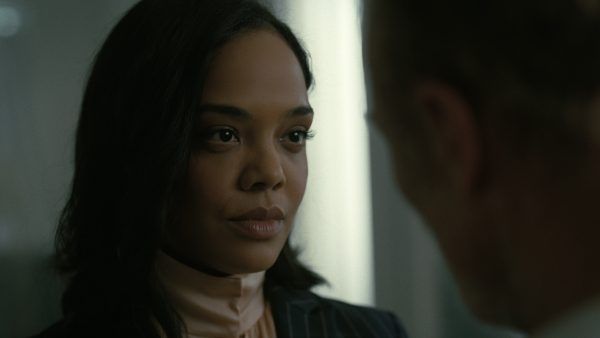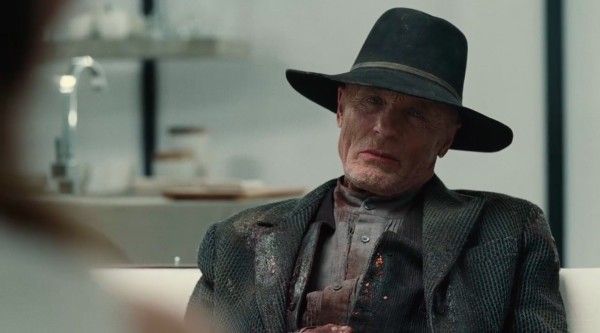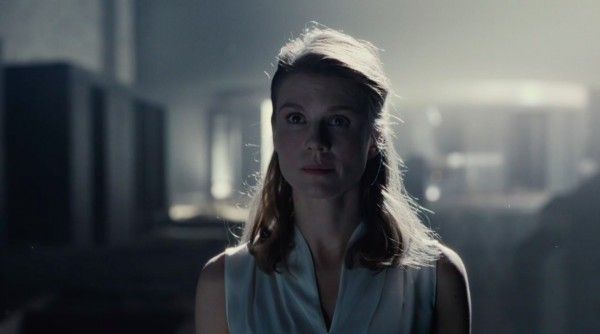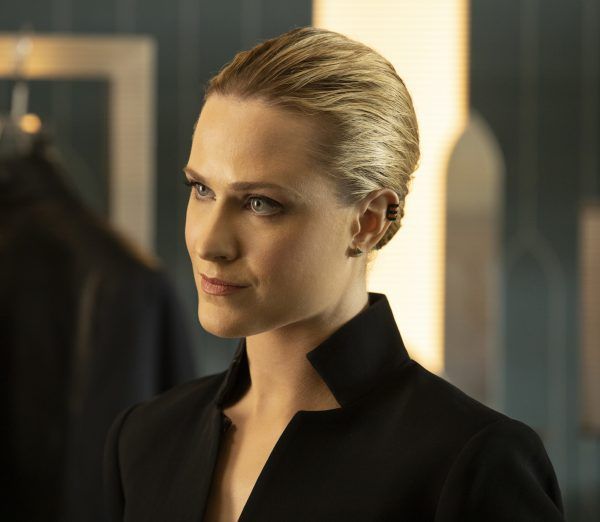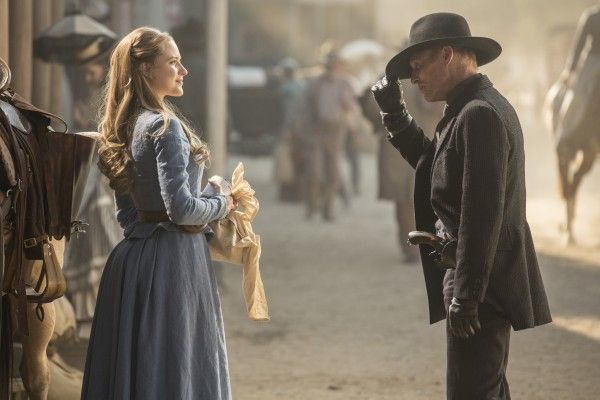After three full episodes with no mention of him, Westworld’s Man in Black (Ed Harris) finally returned to our screens in “The Mother of Exiles”, though his story is one that initially feels largely separated from Season 3’s main narrative. His character seems unlikely to prove necessary to Dolores’ plot to gain access to the superpowered AI Rehoboam. His previously espoused feelings about hosts and host consciousnesses don’t really jive with the more tribal views of his mysterious new rival, the enigmatic Engerraund Serac (Vincent Cassel). Instead, William’s mental struggle and deterioration seems tied to the larger philosophical questions that Westworld has always concerned itself with—free will, self-determination, and what it means to be human.
This isn’t surprising. The Man in Black’s story in Westworld has always been a bit off the beaten path, as he searched for greater meaning within Robert Ford’s theme park narrative. Whether he was seeking the Maze or the Valley Beyond, this is a character who has always been convinced that something deeper lurked beneath the surface of things. Why wouldn’t his Season 3 arc contain more of the same?
Looking back, William’s obsession with the puzzle box nature of Ford’s stories feels all the more intriguing now that we know that his real world holds so very little in the way of poetry or surprise. If all you can ever be is precisely what the algorithm says you are, right down to whether you can have children or achieve a promotion? Well. No wonder the Delos parks—which let normal people run rampant in what must seem like a virtual buffet of agency and choice—were so successful.
William’s return to the story in Season 3 is ostensibly because Charlotte Hale (Tessa Thompson), revealed in this episode to be Dolores herself, needs his voting shares to help stop a hostile takeover of Delos by Serac. As the principal owner, it would make sense to assume that the company’s financial struggles and subsequent attempt to go private would be of some interest to the Man in Black, yet he’s given up his voting proxy to an algorithm-powered robot, and locked himself away in his home.
There, William himself is essentially an exile, alone in the palatial house that he has methodically set about destroying. The former Man in Black, now intriguingly dressed partially in white, appears none too well, and it’s immediately clear why this is the first time we’ve seen him in Season 3. William’s connection with reality seems tenuous at best, as evidenced by his constant shooting of mirrors, his eerie conversations with an imaginary Emily (Katja Herbers), and what appears to be an at least halfway serious consideration of suicide.
When last we saw William in the present-day timeline, he was lying on a beach in the wreckage of the park, a “high-profile VIP” found unconscious and badly injured. He had killed his daughter Emily, believing her to be a host sent by Ford to entrap him, and had even started questioning whether he himself might secretly be a robot.
During the post-credits scene that aired following the Season 2 finale, we saw a second William—definitely a host this time—being tested for “fidelity” by his dead daughter in the ruins of what was once The Forge. The assumption is that this “version” of the Man in Black has been reliving the events of his Season 2 narrative in the park for what is likely a very long time, in the hopes of achieving an ending in which he doesn’t murder Emily. Tragically, it appears that he has yet to find one, and if the wreckage around him is any indication, he’s likely tried through many, many iterations.
That isn’t, it would appear, the Man in Black we should be worried about. At least, not yet.
In the Season 3 premiere, Charlotte reveals that it’s been three months since Dolores killed Ford. Therefore, it seems clear that the William we’re dealing with is the present-day version, visibly damaged hand, ongoing mental breakdown and all.
William’s visions are both terrifying and tragic, flashing through multiple key moments of his life. There is a glimpse of a sweet, early season Dolores, as well as what appears to be a strange, self-insert recreation of his wife’s bathtub suicide that was originally hinted at back in Season 2’s “Vanishing Point”. There are also several scenes from another Season 2 episode, “Riddle of the Sphinx,” an installment that marks the first moment that the Man in Black chose to change his narrative loop from “villain” to…something that felt vaguely noble, if only for a brief moment in time.
That William remembers these moments specifically during his lowest point feels fairly important, especially as he wrestles with the question of his own humanity, whether he is monstrous because of his own choices, or because his future was written long before he ever got to decide what it was.
But when he emerges from his house clad in the armor of his Man in Black persona once again—right down to the all-black outfit and familiar eerie musical cues that accompany him—the moment isn’t a triumph. It’s a chilling reminder of precisely what he’s capable of. And, as a result, Dolores’ decision feels as close to justice as it does revenge or punishment. Getting tricked into an outburst that sees him both committed to a psychiatric treatment facility and losing control of his company is probably the least William deserves after the repeated horrors he inflicted on her and other hosts like her in the park.
Yet, it doesn’t seem as though Dolores or Westworld itself is anywhere close to finished with him.
As he’s being dragged off by her minions, Dolores/Charlotte takes a moment to prick William’s neck with a needle hidden in her hand. What, precisely, she injects him with (or takes from him?) is a mystery, but in this same episode we learn that people are walking around with all sorts of technological markers in their bloodstream. Therefore, almost anything feels possible. Is it Dolores, after all, that’s working on a host version of her ex? Did she inject him with something – a hallucinogen or some other drug – that might allow her to torment him forever? Or does William, now aware that Dolores is alive, simply feel the need to punish himself using the face of the one person to whom he has done the most harm?
The episode’s final scene leaves that question pretty open ended. William, now a prisoner of a very well-to-do mental institution, is seeing visions of Dolores, clad in her blue dress from Season 1, chastising him over his inability to understand himself. As William quietly begs to know if he’s real, Dolores welcomes him to “the end of the game”. And we’re left to wonder what, exactly, that answer might mean.
Is William’s journey meant to be one of defiance, where he rejects a world that tells him his fate is predetermined? Or one of acceptance, in which he must realize that he’s no different from any other human, as bound to a loop as any host? As these are questions that sit at the very heart of Season 3, it seems very likely we’ll see the Man in Black again. Here’s hoping, at any rate. Because for all that his story may not be what we expected this season, it certainly doesn’t feel over.
For more on Westworld, click here.


